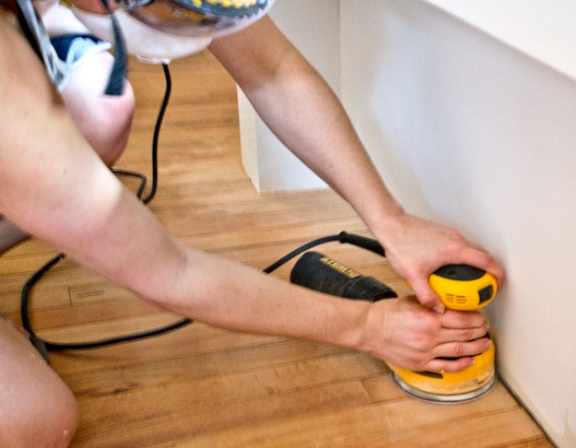
How To Refinish Hardwood Floors

Hardwood Refinishing
How to Restore Hardwood floors?

Get the Best Refinishing Service with Reliable Partner
Have questions about floor sanding and finishing?
How many times can you sand and refinish hardwood floors?
The number of times you can sand and refinish hardwood floors largely depends on the thickness of the hardwood wear layer. Typically, solid hardwood floors can be sanded and refinished multiple times throughout their lifespan, as they have a thicker wear layer. This can range from three to seven times or more, depending on the initial thickness. Engineered hardwood floors, on the other hand, have a thinner wear layer, allowing for fewer refinishing opportunities, typically around one to three times. It’s essential to consult with a professional flooring expert to assess the condition of your hardwood floors and determine the remaining wear layer, ensuring that refinishing is a viable option and optimizing the floor’s longevity.
What not to do when refinishing hardwood floors?
When refinishing hardwood floors, it’s crucial to avoid common pitfalls that could damage the wood or compromise the finish. Firstly, never skip the essential step of sanding; inadequate or uneven sanding can lead to an uneven finish. Avoid over-sanding, as this can thin the wood and limit the number of future refinishing opportunities. Secondly, do not rush the process; adequate drying time between coats of finish is essential to prevent imperfections and ensure a durable finish. Lastly, avoid using the wrong type of finish or mixing incompatible products, as this can result in a gummy or streaky appearance. To ensure a successful refinishing project, it’s advisable to consult with professionals who have the expertise and knowledge to navigate these potential pitfalls and deliver exceptional results.
What Materials and Tools Do I Need To Refinish My Hardwood Floors?
To refinish hardwood floors effectively, you’ll need a range of materials and tools. These typically include a drum or orbital floor sander, edger sander, sandpaper of various grits (from coarse to fine), a vacuum cleaner for dust removal, wood filler for filling gaps and cracks, a putty knife, and safety equipment such as a dust mask and safety goggles. You’ll also require floor finish and an applicator, which can be a roller, pad, or lambswool applicator, as well as a paint tray, painter’s tape, and drop cloths to protect adjacent areas. Proper preparation materials like a moisture barrier if needed, stain if you want to change the floor’s color, and cleaning supplies to ensure a clean surface are essential. It’s important to have a clear plan and all the necessary materials and tools before starting the refinishing process to achieve the best results.


